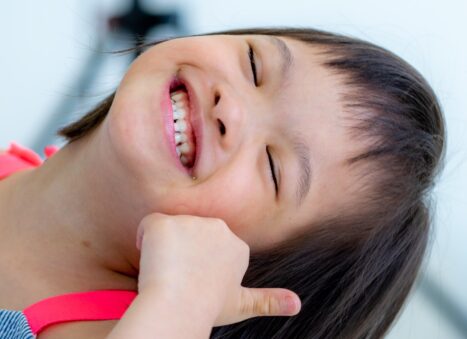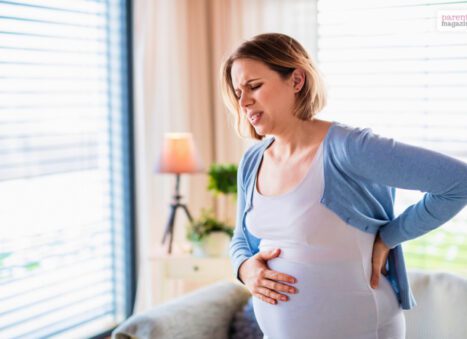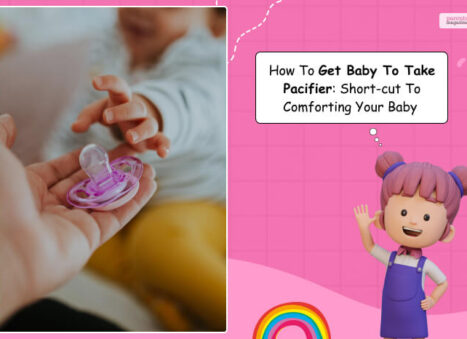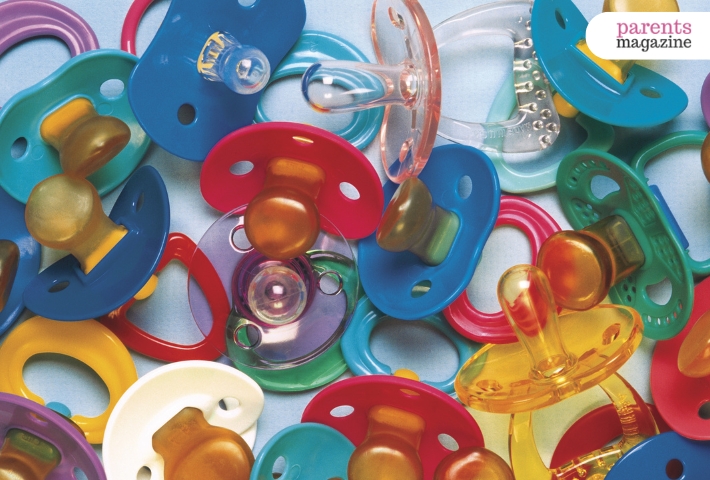
5 Best Pacifiers for Breastfed Babies & the Best Ways to Use Them
The most terrifying thing about parenting is missing out on little things. Learning about pacifiers shouldn’t be one of them.
You don’t want to introduce them too early or too late. Specific mistakes regarding the use of pacifiers can cause your baby to have nipple confusion. In fact, it can also affect breastfeeding. So, how do you not make all those mistakes? And how can you find the best pacifiers for breastfeed babies?
If you are looking for the right pacifier for your baby and the right way to use it, you are in the right spot.
When To Get Your Baby a Pacifier?
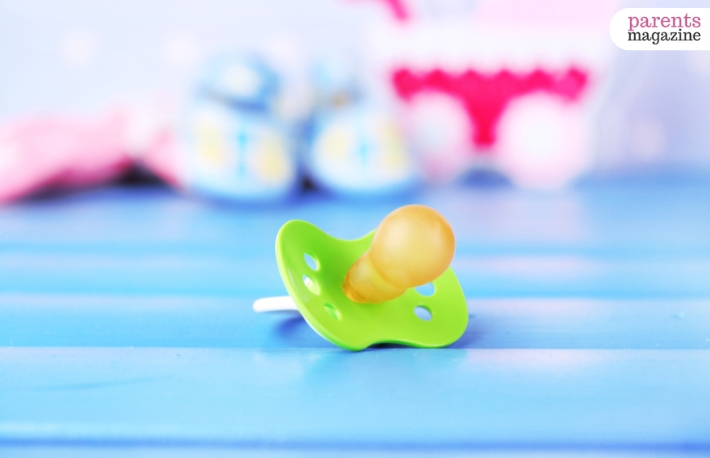
The point and time for introducing a pacifier should be well thought out. It’s good for both the mother and the baby.
Yes, the hospital will give you pacifiers right when you walk out from there after delivery. But it’s best to wait until the breast milk supply is steady and established. The right time is usually around 3 to 6 weeks (about 1 and a half months) during postpartum.
So, what good will this waiting to do? Here’s it’ll help with –
- Avoid nipple confusion
- It will prevent your breast from getting enough stimulation, encouraging your body to produce milk.
The right time is to wait until the mother’s body steadily produces milk and is ready for breastfeeding.
Do Pacifiers Affect Milk Supply?
You are physically connected to your newborn even after they have come out of the womb. It’s important to know what pacifiers do first. It helps the baby self-soothe, keeps them distracted, helps them sleep, and more.
But, when he’s not using a pacifier, he’s nursing. When your baby demands breastmilk through nursing, your body produces it to supply. So, it’s more like a process that involves both the mom and the baby. But, if your baby always has a pacifier, your body isn’t getting the cue to produce milk.
So, should you just get rid of the pacifier? No. Just wait until you are ready to produce breastmilk. You can also use it in moderation to support breastmilk production and help your baby nurse.
What are the cues for stopping the use of pacifiers? Here, keep the following points in mind –
- If the frequency of breastfeeding is less frequent.
- When you face difficulty breastfeeding.
- Baby refuses to nurse.
- Problem regarding baby’s weight gain.
- Sore nipples.
- Difficulty with milk supply.
- When the baby starts having repeated ear infections.
- Yeast/thrush from the baby or mom.
Does Using Pacifier Affect Breastfeeding?
The use of pacifiers has some impact on breastfeeding. Here are several ways your breastfeeding can be affected by using pacifiers –
- Hunger cues altered: It can affect your baby’s way of showing hunger cues.
- Nipple Confusion & Latching: It can influence how your baby latches to the breasts. When a pacifier is introduced early, your baby might get inclined to the pacifier over the real nipples. This can affect their nursing and their overall health.
- Difficulty Producing Breast Milk: Breastmilk supply can become less frequent and difficult.
- Dental Problem: Also, if your baby uses the pacifiers for a long time, it might cause dental problems like misaligned teeth.
- Difficulty Weaning: weaning might be difficult If the baby develops a dependency on the pacifier.
Tips to Buy the Best Pacifiers for Breastfed Babies
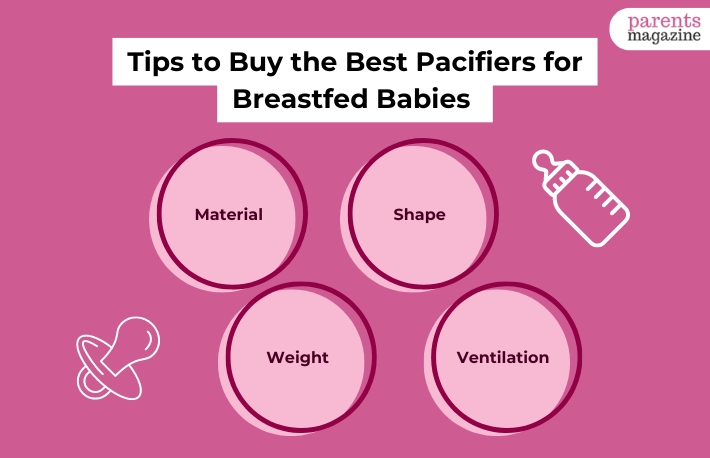
Now that you know the right pacifier usage, let’s understand how to pick the right one from the market.
Material: when buying a pacifier, go for the ones made of silicone. Silicone is a soft material and is easier to maintain.
Shape: the pacifiers should mimic the shape and size of the real nipple. It should have a rounded tip and a cylindrical shape. A round-shaped pacifier helps place your baby’s tongue to mimic breastfeeding.
Don’t go for the cherry or ball-shaped pacifiers. Those can affect their bite and interfere with breastfeeding.
Size: Go for the smaller pacifiers for breastfed babies. Check if the shield between the ring and the nipple is between 1.5 inches in diameter. Those reduce the risk of choking.
Weight: Lightweight pacifiers are always better, and they don’t put a strain on your baby’s mouth.
Ventilation: the ones with ventilation holes are better options since they prevent moisture from building up inside the pacifier.
Also, it’s best to choose a pacifier that fits your baby’s age. The size and the types of pacifiers also have some role in your baby’s oral development. Discuss with your pediatrician how often you replace the pacifiers. Some recommend having a new one every month.
5 Best Pacifiers for Breastfed Babies
We have kept all the right points in mind while creating this list of the best pacifiers for your baby. Most of these are good enough for babies aged between 0 to 6 months.
1. Philips AVENT Soothie Pacifier
Age range: 0 to 18 months
Nipple shape: Round
Dishwasher safe: Yes (top-rack only)
The best pacifiers for breastfed babies are the ones that help you soothe them easily. Many parents recommend these pacifiers because of their round shape. Plus, these pacifiers are often used in hospitals.
The material used is medical-grade silicones. So, there’s hardly any chance of pieces coming apart or these acting as choking hazards. Don’t worry about breathing problems since an airhole allows your baby to breathe peacefully as they fall asleep.
2. MAM Newborn Pacifier
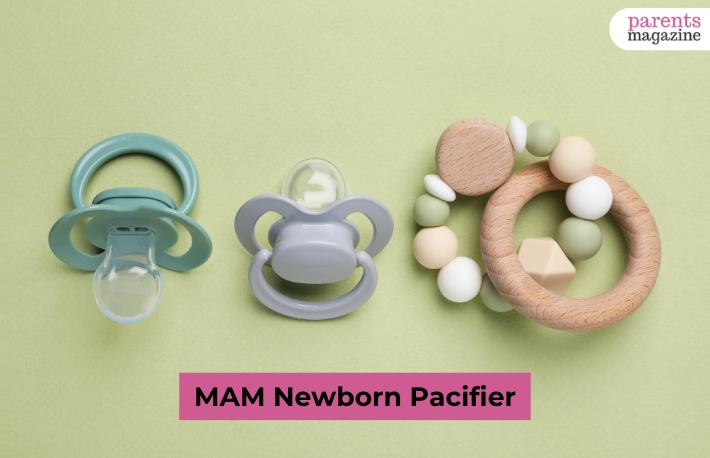
Age range: 0 to 3 months
Nipple shape: flat
Dishwasher safe: No
Here’s a pacifier that’ll help you soothe your baby when they are aged between 0 to 3 months. Unlike other brands that claim to offer pacifiers for newborn babies, MAM manufactures products just for babies aged between 0 and 3 months.
These pacifiers are smaller than regular ones, are lightweight, and have curved mouth shields. Yes, the nostrils of your baby get enough room to breathe properly. The use of super soft silicon keeps your baby comforted.
Also, they are comfortable for the baby’s skin, and the nipple is flat, helping mimic breastfeeding. You can easily avoid nipple confusion.
Also, the products made by Mam are in the median range. The cute design also looks awesome on your baby’s mouth.
3. Nano Bebe Active Baby Pacifiers
Age range: 4 to 36 months
Nipple shape: Round
Dishwasher safe: Yes (top-rack only)
Here’s the best baby pacifier for your baby when they are teething. Babies aged above also need pacifiers. There are only a handful of them worth recommending for children who are aged between 0 and 6 months.
Nanobebe Active Baby Pacifiers are good enough for older babies. These pacifiers have an extra-flexible silicon design fighting securely on your baby’s face. They don’t fall out of their mouth easily.
There are large ventilation gaps on either side of the nipple. The ventilation gaps there are large, and your baby gets enough airflow. Plus, these pacifiers are strong and durable enough for teething babies. They are also dishwasher-safe.
4. Tommee Tippee Ultra-Light Silicone Pacifier
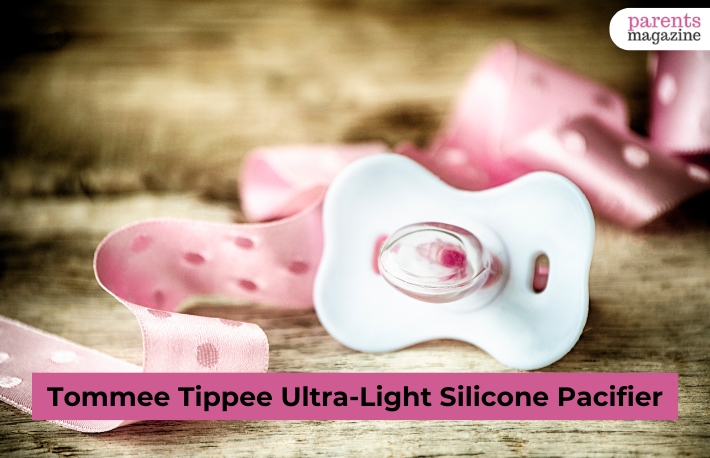
Age range: 0 to 6 months
Nipple shape: Flat
Dishwasher safe: Yes (top-rack only)
You are looking for the best pacifier for breastfed babies, and want something lighter. Well, we have a recommendation. These Ultra-Light Silicone have an ergonomic design, making them less likely to fall out. Also, your baby finds it comforting and easy to suck on.
The large, ventilated gaps on both sides are orthodontic. The skin-like texture of the silicone gives the baby the feeling of breastfeeding. Also, they have anti-static properties, making these products less likely to get dirty or collect dust.
5. NUK Comfy Orthodontic Pacifiers
Age range: 0 to 6 months
Nipple shape: Flat
Dishwasher safe: Yes (top-rack only)
While planning to stock up on pacifiers for your baby, people usually look for the cheapest options. But cheap doesn’t always mean you’ll have to compromise on quality.
Here are some cheap options for Orthodontic pacifiers. These pacifiers have flexible medical-grade silicone, which is safe for the newborn baby’s skin.
The curved pacifier design supports proper airflow into your baby’s nose. Babies aged up to 6 months love the orthodontic nipple thanks to the comfortable suck. The pacifiers come in bright and vibrant colors, making it easier for you to find them.
Conclusion
No matter which brand you are using, build a habit of regularly cleaning your baby’s pacifier. The best pacifiers for breastfed babies should always have the right size, shape, and soft material. Read the product information and instructions before buying and using any pacifier.
You can also buy pacifier cleaners to maintain hygiene. The five pacifiers suggested in this article should be helpful if you are looking for a selected few products.
Read Also:
Already have an account?
Sign In
Create your account
User added successfully. Log in






